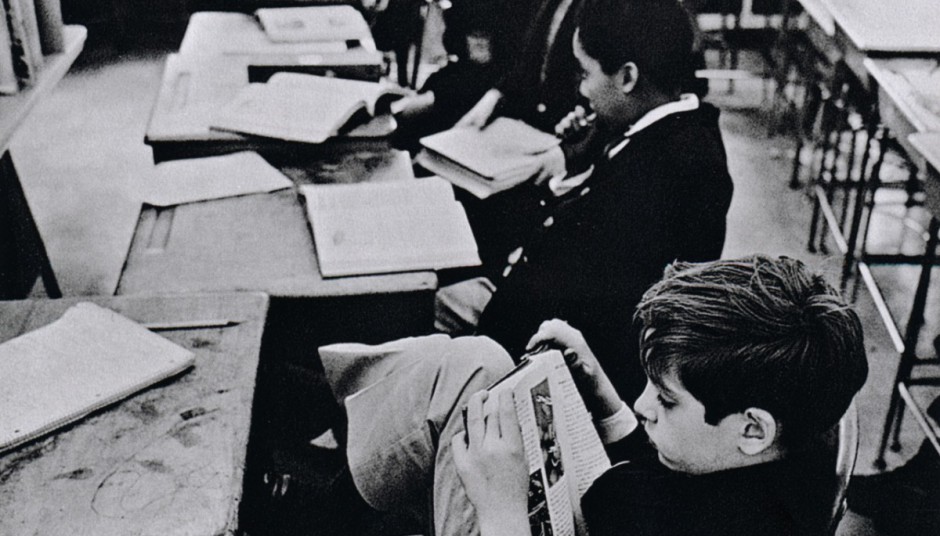I think that Evans’ clandestine approach to taking the subway passenger photos was very clever. Taking it in that matter was the only way he could’ve captured the real face expressions of people. According to the NPR interview with Met curator Jeff Rosehein (audio) not only did he know how to hide the camera but he manipulated the shutter as well. For this he used a special cap of release that ran from the top of the camera to his coat, down to his palm of hand where he was able to fire a shutter by squeezing a device. The fact that he captured passengers real face expressions made the photos much more interesting. You can see the two women engaging in an interesting conversation and the mom holding her son and you can see her facial expression as worried and very thoughtful. They are truly interesting photos to observe. According to the photos I can’t tell its the Great Depression era unless I’m told so. I see many similarities between the riders from then and now. The thing with NYC subway riders is the eye contact. Just like the subway now a days eye contact is the hardest thing to do with total strangers. In one photo a man seems like a priest is sitting with his hat on starring at the ceiling. Another man with a cane is staring at the floor. If you go into the subway right now you will for sure find people doing the exact same thing. There face expressions seem serious. This is expected in the subway all the time, when you are alone in the train your not gonna be smiling or laughing alone. Similarities overall are people engaging in talk, families sitting down, people starring “up” or “down” and people avoiding eye contact.
Contact Information
Professor Sandra Cheng
Office: Namm 602B
Office Hours: Mon 10-11 am, Tu/Th 9-10 am or
by appointment
Office Tel: 718-260-5003
Email: scheng@citytech.cuny.edu New York Times Arts
New York Times Arts-
Recent Posts
Recent Comments
- Leidy on Homework #3: Robert Capa’s Death of a Loyalist Soldier
- Djane96 on Homework #2: Walker Evans’ Subway Portraits
- Djane96 on Homework #3: Robert Capa’s Death of a Loyalist Soldier
- Kelly-Ann on Henry Gomez Homework #3: Robert Capa’s Death of a Loyalist Soldier
- Billy on Homework #3: Robert Capa’s Death of a Loyalist Soldier
Archives
Categories
Meta




I definitely agree with you Cindia. I would not be able to tell that this was the Great Depression era alone by these photos. The passengers expressions are so similar it would be hard to tell.
I also would have to agree. If I didn’t have prior knowledge that these photographs were taken during the Depression era, I would of assumed these photographs were just photographs from a long time ago. It’s interesting to see the behavior and facial expressions of people from this era share so much likeness to modern day people’s expressions. Even with technological advances and several decades, people still show the same behavior.
I kinda agree with you cindia with hiding the camera really help Walker Evans capture the real face expression of people and not a fake smile to please the camera. But disagree with you when you say that in a subway system nobody is smiling or laughing. I don’t know what train you ride in NYC but every time go into the train, I always see someone smiling either because they had a good day or their just happy to be live. You should really pay close attention to people on the train and not the people on the bus before judging. Overall your response is good to me but just needs to be changed up a little more.